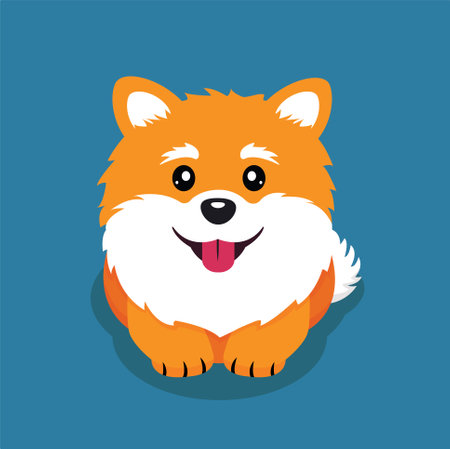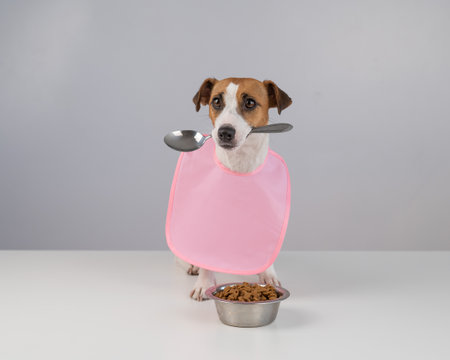1. Understanding Small Pet Nutritional Needs
Proper nutrition is essential for keeping your small pet healthy and happy. Just like humans, small pets require a balanced diet that includes proteins, fats, carbohydrates, vitamins, and minerals. Understanding these nutrients will help you provide the best diet for your furry friend.
Essential Nutrients for Small Pets
Each nutrient plays a crucial role in maintaining your pet’s health. Below is a breakdown of the essential nutrients your small pet needs:
| Nutrient | Function | Sources |
|---|---|---|
| Proteins | Supports growth, muscle development, and tissue repair. | Pellets, legumes, eggs (for some species), and insects (for certain pets). |
| Fats | Provides energy and supports healthy skin and fur. | Nuts, seeds, and healthy oils like flaxseed oil. |
| Carbohydrates | A source of energy that aids digestion. | Vegetables, fruits, and whole grains. |
| Vitamins | Aids in various bodily functions such as immunity and metabolism. | Diverse diet with fresh vegetables and specialized supplements if needed. |
| Minerals | Supports bone strength, nerve function, and hydration balance. | Cuttlebones (for birds), mineral blocks, and leafy greens. |
The Importance of a Balanced Diet
A well-balanced diet ensures that your pet remains active and free from nutritional deficiencies. Feeding too much of one nutrient while neglecting others can lead to health issues such as obesity or malnutrition. Always aim for a varied diet that meets your pet’s specific needs based on their species.
Nutritional Needs by Species
The dietary requirements of small pets vary depending on their species. For example:
- Rabbits: Need high-fiber diets with plenty of hay.
- Guinea Pigs: Require Vitamin C supplementation since they cannot produce it naturally.
- Hamsters: Thrive on a mix of seeds, grains, and occasional protein sources like mealworms.
- Bunnies: Should avoid excessive sugary treats like fruits to prevent digestive problems.
- Pocket Pets (e.g., Ferrets): Require high-protein diets similar to carnivores.
Avoiding Common Dietary Mistakes
Avoid feeding processed human food, excess sugar, or foods toxic to pets such as chocolate or onions. Always research what is safe before introducing new foods into their diet.
Caring for your small pet’s nutrition is one of the most important aspects of responsible pet ownership. By understanding their dietary needs and providing a well-balanced diet, you can ensure they live a long, happy life!
2. Choosing the Right Diet for Your Small Pet
Feeding your small pet the right diet is essential for their overall health and happiness. With so many options available, it can be overwhelming to decide what’s best for your furry friend. Let’s explore the different types of diets—kibble, fresh food, and homemade meals—and how to choose the most suitable one.
Kibble: A Convenient Option
Kibble is a popular choice because it’s convenient, has a long shelf life, and is formulated to meet nutritional needs. However, not all kibble is created equal. Look for high-quality brands with natural ingredients and avoid fillers like corn and artificial preservatives.
Pros of Kibble
- Easy to store and serve
- Formulated for balanced nutrition
- Affordable compared to fresh or homemade food
Cons of Kibble
- May contain artificial additives
- Less moisture content, which can lead to dehydration
- Some pets may develop allergies to certain ingredients
Fresh Food: A Natural Approach
A fresh food diet consists of raw or lightly cooked meats, vegetables, and fruits. This option mimics a pet’s natural diet in the wild and provides essential nutrients without artificial additives.
Pros of Fresh Food
- No artificial preservatives or fillers
- Higher moisture content supports hydration
- Easier on digestion for some pets
Cons of Fresh Food
- Spoils faster than kibble
- Takes more time to prepare and store properly
- Can be expensive depending on ingredients used
Homemade Diets: Full Control Over Ingredients
If you prefer complete control over what goes into your pet’s food, a homemade diet might be ideal. This requires careful planning to ensure your pet gets all the necessary nutrients.
Nutritional Considerations for Homemade Diets
| Nutrient | Importance | Sources |
|---|---|---|
| Protein | Main source of energy and muscle development | Chicken, turkey, fish, eggs |
| Fats | Aids in skin and coat health | Coconut oil, fish oil, animal fat |
| Vitamins & Minerals | Supports immune function and overall health | Dairy, leafy greens, supplements if needed |
| Fiber | Aids digestion and prevents constipation | Pumpkin, carrots, sweet potatoes |
| Moisure Content | Keeps pets hydrated and supports kidney function | Bones broth, water-rich vegetables |
Pros of Homemade Diets
- Total control over ingredients and quality
- No artificial additives or preservatives
- Easier customization for pets with allergies
Cons of Homemade Diets
- Takes time to plan and prepare meals
- Poorly balanced meals can lead to deficiencies
- Might require veterinary guidance for proper nutrition
Selecting the Best Diet for Your Pet
The best diet depends on your pet’s species, age, activity level, and health conditions. Some pets thrive on kibble, while others do better with fresh or homemade food. Always consult with a veterinarian before making major dietary changes.
No matter which diet you choose, prioritize high-quality ingredients and proper portion control. Keeping an eye on your pet’s weight, energy levels, and digestion will help determine if their current diet is meeting their needs.

3. Safe and Unsafe Foods for Small Pets
As a pet owner, you might be tempted to share your favorite snacks with your furry friend. However, not all human foods are safe for small pets. Some can be healthy treats, while others can be harmful or even toxic. Below, we’ll break down which foods are safe and which ones to avoid.
Safe Foods for Small Pets
Certain fruits, vegetables, and grains can be a great addition to your small pet’s diet. These foods provide essential vitamins and minerals that support their overall health.
| Food | Benefits |
|---|---|
| Carrots | Rich in vitamin A, good for eyesight |
| Apples (seedless) | A good source of fiber and vitamin C |
| Kale | Packed with antioxidants and calcium |
| Blueberries | A great source of antioxidants |
| Cucumbers | Hydrating and low in calories |
| Pumpkin (plain) | Aids digestion and provides fiber |
| Oats | A healthy treat in moderation, good for energy |
Toxic or Harmful Foods to Avoid
Certain foods can be dangerous or even deadly to small pets. Some may cause digestive issues, while others contain toxins that can lead to serious health problems.
| Food | Dangers |
|---|---|
| Chocolate | Toxic to most small pets; affects the nervous system and heart |
| Avocado | Contains persin, which is toxic to many animals |
| Citrus Fruits (Oranges, Lemons) | The acidity can upset their stomachs |
| Dairy Products (Milk, Cheese) | Poor digestion can lead to bloating and discomfort |
| Nuts (Almonds, Walnuts) | Difficult to digest; may cause choking hazards or toxicity in some pets |
| Sugary or Processed Foods (Candy, Chips) | No nutritional value; may cause obesity or digestive issues |
| Onions & Garlic | Toxic and can damage red blood cells leading to anemia |
| Pits & Seeds from Fruits (Cherry Pits, Apple Seeds) | Might contain cyanide-like compounds that are toxic if consumed in large amounts |
| Caffeinated Drinks (Coffee, Tea, Soda) | Affects the heart rate and nervous system negatively |
How to Introduce New Foods Safely?
If youre introducing a new food into your pets diet, do so gradually. Start with a small amount and observe how they react. If you notice any signs of an upset stomach, such as diarrhea or loss of appetite, stop feeding that item immediately. Always consult with a veterinarian before making major changes to your pets diet.
Treats Should Be Given in Moderation
No matter how healthy a snack might be, it should only make up a small portion of your pet’s diet. The majority of their nutrition should come from high-quality pellets or hay (for rabbits, guinea pigs, etc.). Treats should never replace their main food source.
Avoid Feeding Table Scraps
Your leftovers might not be suitable for small pets. Human meals often contain added salt, sugar, or seasonings that can harm them. Stick to fresh fruits, veggies, and approved pet-safe snacks instead.
Selecting the right foods for your small pet is essential for their well-being. By avoiding harmful items and offering nutritious treats in moderation, you can ensure they stay happy and healthy!
4. Creating a Balanced Feeding Schedule
Feeding your small pet the right way isn’t just about choosing the best food—it’s also about establishing a consistent and balanced feeding schedule. Understanding how often to feed your pet, portion sizes, and maintaining regular meal times can significantly impact their overall health and happiness.
How Often Should You Feed Your Small Pet?
The frequency of feeding depends on the type of small pet you have. Some animals require multiple small meals throughout the day, while others do well with one or two feedings. Here’s a general guideline for common small pets:
| Small Pet | Feeding Frequency |
|---|---|
| Rabbits | Unlimited hay + 2 small meals of fresh veggies and pellets |
| Guinea Pigs | Unlimited hay + 2 small meals of fresh veggies and pellets |
| Hamsters | 1-2 small meals per day |
| Ferrets | Multiple small meals throughout the day (high-protein diet) |
| Chinchillas | Unlimited hay + 1-2 small meals of pellets and occasional treats |
| Rats & Mice | 1-2 small meals per day with occasional fresh food snacks |
Determining the Right Portion Sizes
The correct portion size is crucial to prevent overfeeding or underfeeding. Factors like age, activity level, and species all play a role in determining how much food your pet needs. Here are some general portion guidelines:
- Hay-based diets (rabbits, guinea pigs, chinchillas): Unlimited hay, plus 1/8 to 1/4 cup of pellets per day.
- Dried pellet diets (hamsters, rats, mice): 1-2 tablespoons per day.
- Fresh vegetables (for herbivores): About 1 cup of mixed vegetables daily.
- Treats: Given sparingly—no more than 5% of their total diet.
The Importance of a Consistent Feeding Schedule
A consistent feeding routine helps regulate digestion and prevents stress in your small pet. Try to feed them at the same times each day to establish a routine they can rely on. Here are some tips for maintaining a steady schedule:
Create a Daily Feeding Routine:
- Mornings: Provide fresh food and check water levels.
- Noon/Afternoon (if needed): Offer additional snacks or meals depending on species.
- Nights: Replenish food bowls and remove uneaten fresh foods to prevent spoilage.
Avoid Overfeeding and Obesity:
- If your pet is gaining excess weight, reduce portion sizes slightly.
- Avoid too many high-calorie treats; opt for healthy alternatives like leafy greens.
- If unsure about portions, consult a vet for personalized recommendations.
The Role of Fresh Water in Your Pet’s Diet
No matter what type of diet your pet has, fresh water should always be available. Check their water bottle or bowl daily to ensure its clean and full.
A balanced feeding schedule is key to keeping your small pet healthy and happy. By understanding how often to feed them, controlling portion sizes, and sticking to a routine, you can provide the best nutrition possible for your furry friend.
5. Addressing Common Dietary Issues
Just like humans, small pets can experience a variety of dietary issues. Understanding these problems and knowing how to manage them can help keep your furry friend happy and healthy. Below, we’ll cover some of the most common nutritional concerns in small pets, including obesity, digestive issues, and food allergies.
Obesity in Small Pets
Overfeeding and lack of exercise are two major causes of obesity in small pets. An overweight pet may have difficulty moving, grooming, or even breathing properly. Here are some signs that your pet may be overweight:
- You can’t easily feel their ribs under their fur.
- They have a round or bloated appearance.
- They seem less active or unwilling to move.
How to Manage Obesity
| Strategy | Description |
|---|---|
| Portion Control | Measure food portions carefully and avoid overfeeding. |
| Healthy Treats | Opt for low-calorie treats like fresh vegetables instead of sugary or high-fat snacks. |
| Encourage Activity | Provide toys, climbing structures, or allow safe free-roaming time. |
| Select Proper Food | Choose a balanced diet suited for your pet’s specific needs. |
Digestive Issues
If your pet experiences diarrhea, constipation, or bloating, it could be due to an improper diet. Some common causes include sudden diet changes, lack of fiber, or spoiled food.
Signs of Digestive Problems
- Soft or watery stools
- Lack of appetite
- Bloating or discomfort when touched
- Difficulties passing stool
How to Improve Digestion
A gradual transition when switching diets is crucial. Always introduce new foods slowly over several days. Ensure your pets diet contains enough fiber by offering hay (for rabbits and guinea pigs) or fiber-rich pellets suitable for their species.
Food Allergies and Sensitivities
If your pet frequently scratches, has skin irritations, or experiences gastrointestinal discomfort after eating, they might have a food allergy or sensitivity.
Common Allergy Symptoms
- Itchy skin or excessive scratching
- Persistent ear infections
- Vomiting or diarrhea after meals
- Lethargy or unusual behavior changes
How to Identify and Manage Allergies
If you suspect your pet has a food allergy, try an elimination diet by removing potential allergens (such as certain proteins or grains) and reintroducing them one at a time to identify the culprit. Consult a veterinarian for guidance on hypoallergenic diets if needed.
Nutritional health plays a vital role in your small pet’s overall well-being. By recognizing and addressing these common dietary issues early on, you can help ensure they live a long, happy life.


